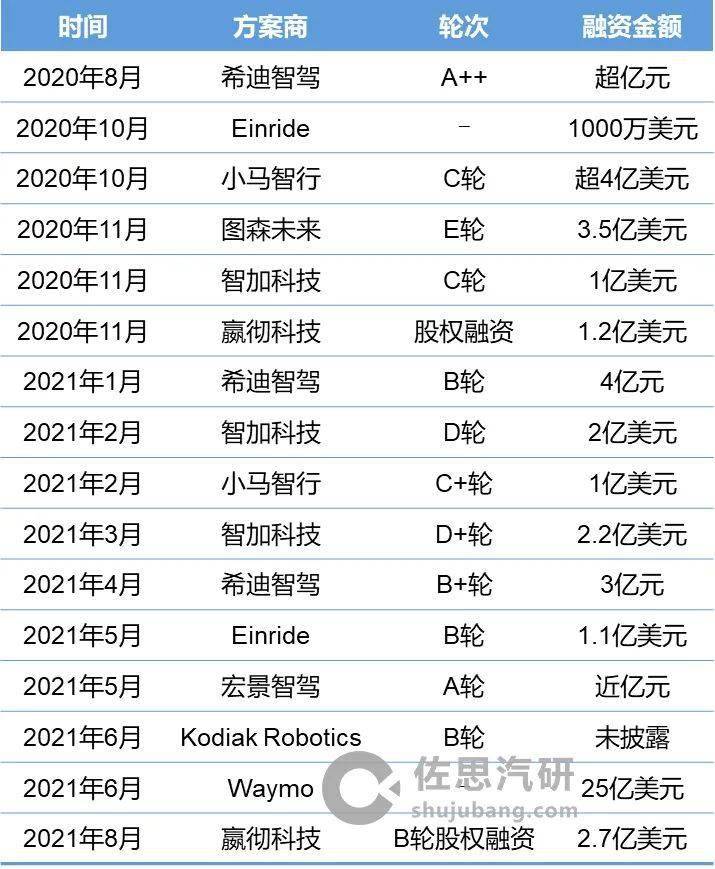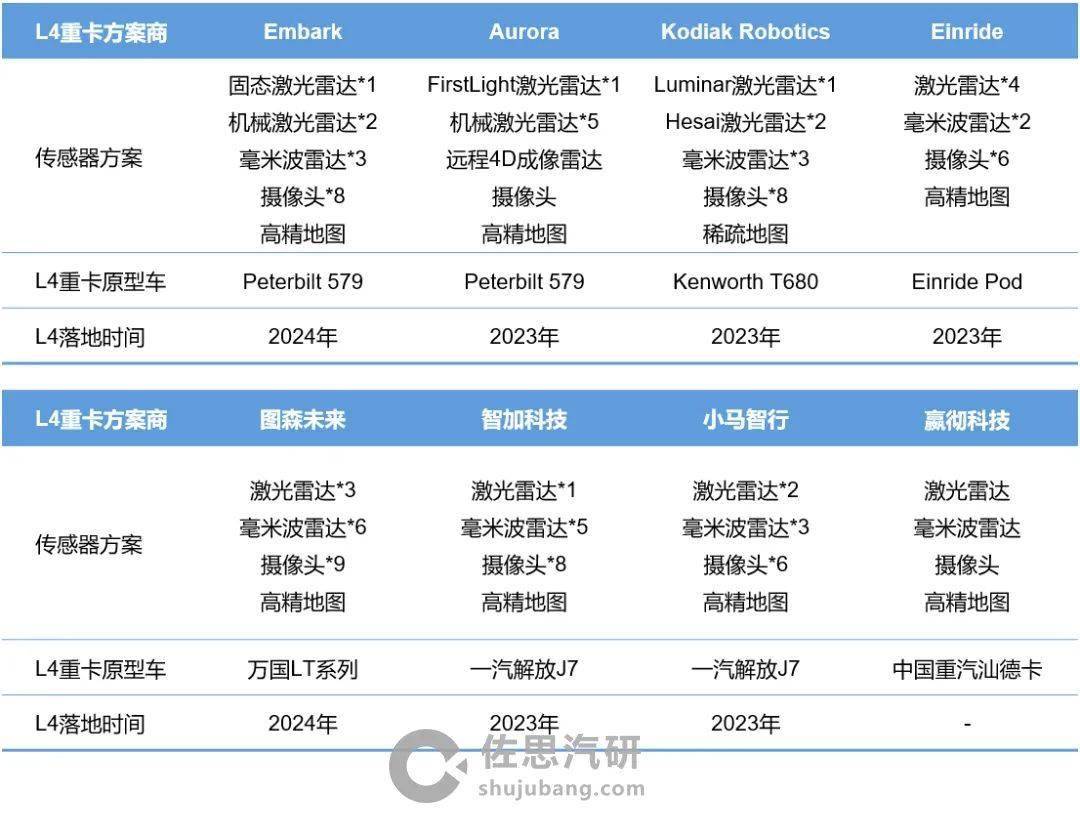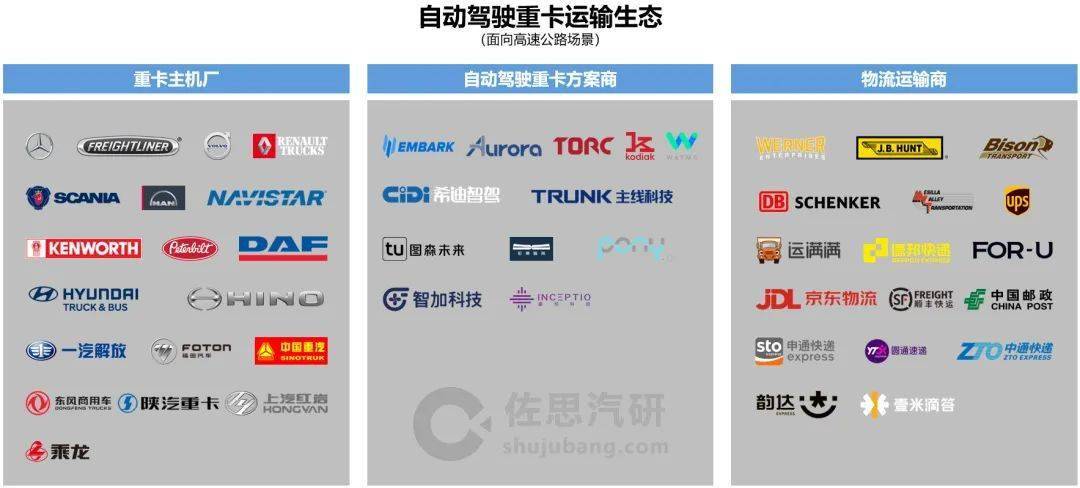Research on self-driving heavy trucks: those who are the first to go public
Release time:
2021-09-02 10:21
Zos Automotive Research and Development released the "Autonomous Driving Heavy Truck Industry Research Report 2020-2021". The report conducted research on the current autonomous driving heavy truck industry for highway scenes, including domestic and foreign OEMs and autonomous driving solution providers.
A number of self-driving heavy truck companies seek IPO financing
The fast-growing road freight volume and the ever-expanding shortage of truck drivers have promoted the financing of self-driving heavy-duty truck stations, and accelerated the development of related products and technologies.
According to incomplete statistics, in the past year (2020.8-2021.8), a number of domestic and foreign heavy-duty truck solution providers have completed at least 16 financings in total. For example, China's Zhijia Technology and Incept Technology have recently completed multiple rounds of financing, with a total financing of more than 800 million US dollars.
Financing situation of autopilot heavy truck solution providers
(2020.8-2021.8)
Source: Zoath Automotive Research "Autonomous Driving Heavy Truck Industry Research Report 2020-2021"
At the same time, under the current situation of continuous losses and high input and low output, some planners began to seek IPO listings in order to seek more funds. On April 15, 2021, Tucson will be listed on the Nasdaq in the future, becoming the world's first listed stock in the field of autonomous driving. Afterwards, a number of autopilot heavy-duty truck solution providers announced that they would be listed in the United States through SPAC.
Listing status of autopilot heavy truck solution providers

Source: Zoath Automotive Research "Autonomous Driving Heavy Truck Industry Research Report 2020-2021"
Lidar + camera + millimeter wave radar has become the mainstream solution
From the perspective of sensor solutions, most manufacturers adopt a laser radar + camera + millimeter wave radar fusion solution to superimpose high-precision maps and high-precision positioning to realize the automatic driving of heavy trucks. Some solution providers, such as Embark, adopt a hybrid solution for lidar, that is, both solid-state lidar and mechanical lidar are used for comprehensive depth perception of the surrounding environment of the vehicle.
In terms of landing time, domestic and foreign mainstream solution providers have relatively consistent expectations for technology landing. Under the premise of loose policies, the landing time of highway automatic driving heavy trucks is 2023-2024.
L4 heavy truck sensor solution and landing time

Source: Zoath Automotive Research "Autonomous Driving Heavy Truck Industry Research Report 2020-2021"
Autonomous driving heavy truck industry cooperation model
In addition to capital betting on self-driving heavy trucks, heavy truck OEMs and logistics companies have poured in and landed on the expressway.
The autonomous driving heavy truck ecosystem for highway transportation scenarios is mainly composed of autonomous driving heavy truck solution providers, heavy truck manufacturers, and logistics transporters, jointly promoting the commercialization of autonomous driving heavy trucks. In terms of technology research and development, solution providers and heavy truck manufacturers jointly develop L4 self-driving heavy trucks based on front-mounted or rear-mounted models; in terms of commercial operation, solution providers work with logistics carriers to carry out commercial operations and conduct actual freight tests on self-driving heavy trucks.
Source: Zoath Automotive Research "Autonomous Driving Heavy Truck Industry Research Report 2020-2021"
From the perspective of cooperative relations, autopilot heavy-duty truck solution providers mostly team up with OEMs to develop L4 heavy-duty trucks based on front-mounted or rear-mounted models based on star models. The research and development cooperation of foreign heavy-duty truck companies in autonomous driving is mostly led by the group level, and its sub-brands and solution providers carry out technical cooperation. For example, Volkswagen Transmission Group and Tucson will establish a global partnership in the future to jointly develop L4 self-driving trucks and apply them to its brands such as Scania (SCANIA) and MAN (MAN).
Source: Zoath Automotive Research "Autonomous Driving Heavy Truck Industry Research Report 2020-2021"
The development trend of autonomous driving heavy trucks

Trend 1: Under the guidance of China's goal of "carbon peak in 2030 and carbon neutral by 2060", the power form of self-driving heavy trucks will gradually penetrate from diesel to low-carbon and zero-carbon energy represented by natural gas and hydrogen.
Trend 2: Line-up and car-following technology has entered a re-examination stage. In January 2019, Daimler Trucks had a disagreement with car-following technology. It believes that after several years of testing for thousands of miles, it is found that the economic effect of the car-following line is not good, the inherent defects of manned driving and other reasons, and the technical research and development of the car-following line is terminated and the L4 heavy truck is fully shifted. At the same time, what impact the actual application of car-following has on normal traffic has not yet been verified in actual road tests.
In the short term, there are certain barriers to the large-scale commercial landing of self-driving heavy trucks in China's business environment.
The goal of the development of L4 self-driving heavy trucks is to remove the driver, so that the vehicle does not need to complete the logistics transportation and distribution under the supervision of a human driver. Its most direct customers are self-operated fleet logistics companies such as JD.com, SF Express, and Santong Yida. Such companies have high expectations for the reduction of TCO (full life cycle cost) of autonomous heavy trucks and have a large market.

According to the Survey Report on Truck Drivers' Employment in 2021 issued by the China Federation of Logistics and Purchasing, it is still common for truck drivers in China to operate independently. Only 17% of truck drivers drive vehicles owned by hired companies or fleets, 83 % Of truck drivers drive their own vehicles. Self-driving heavy trucks are blooming all over the country, and there is still a long way to go.
Related News


Address
No.25, Guangkai Road, Guangrao County, Dongying City, Shandong Province
Copyright © BETTER HOLDING GROUP






